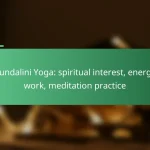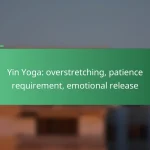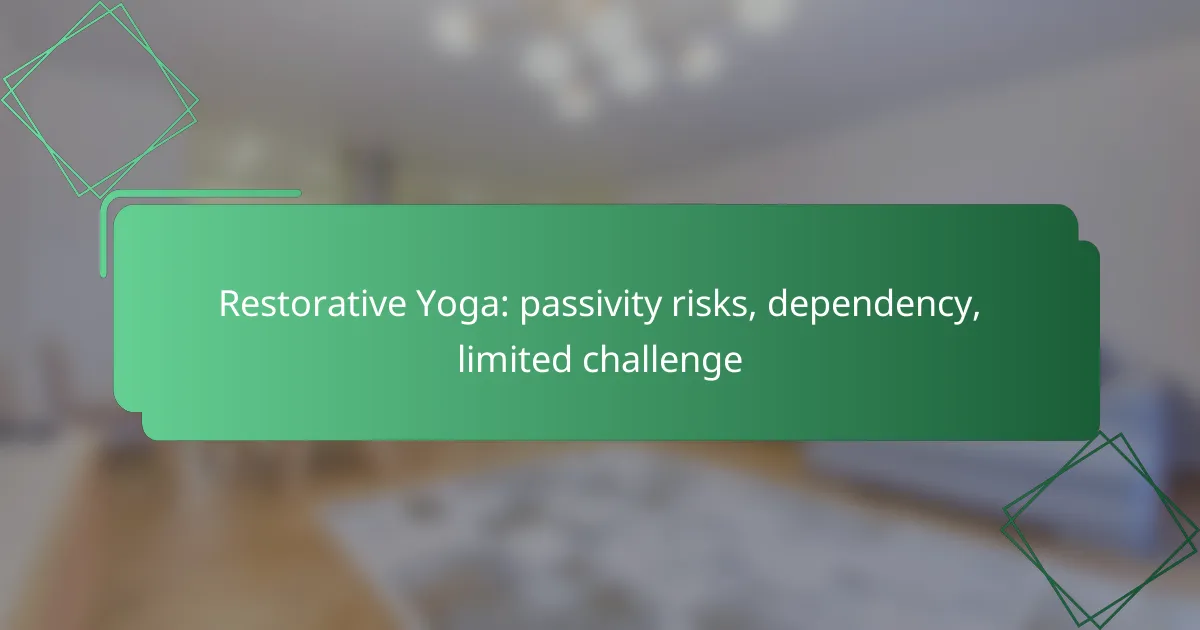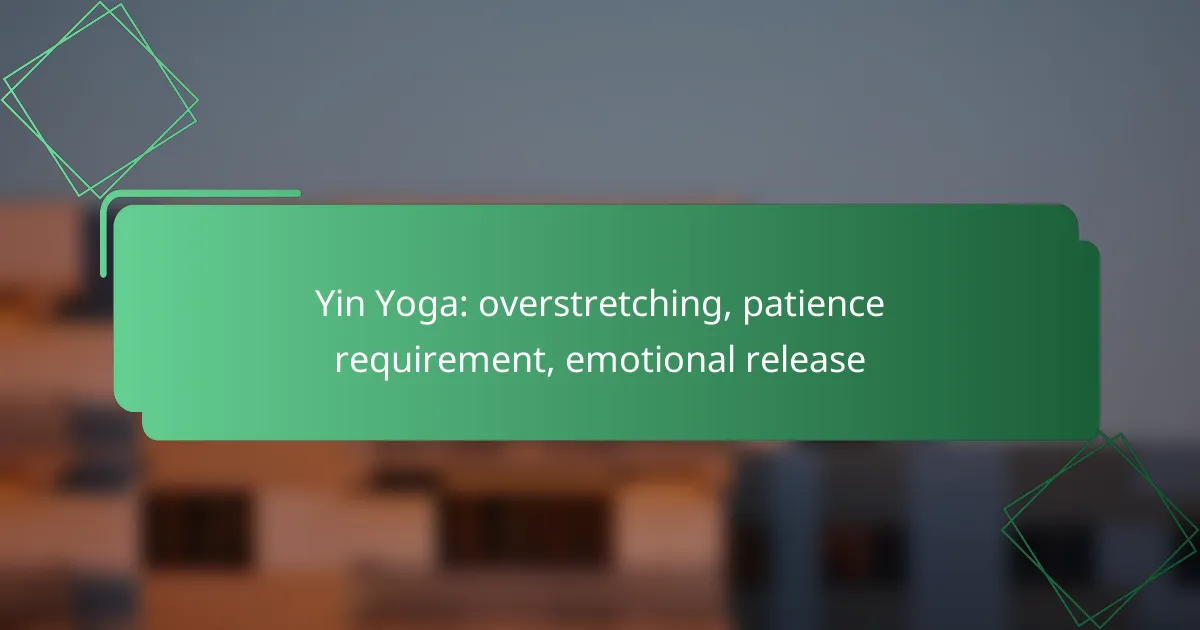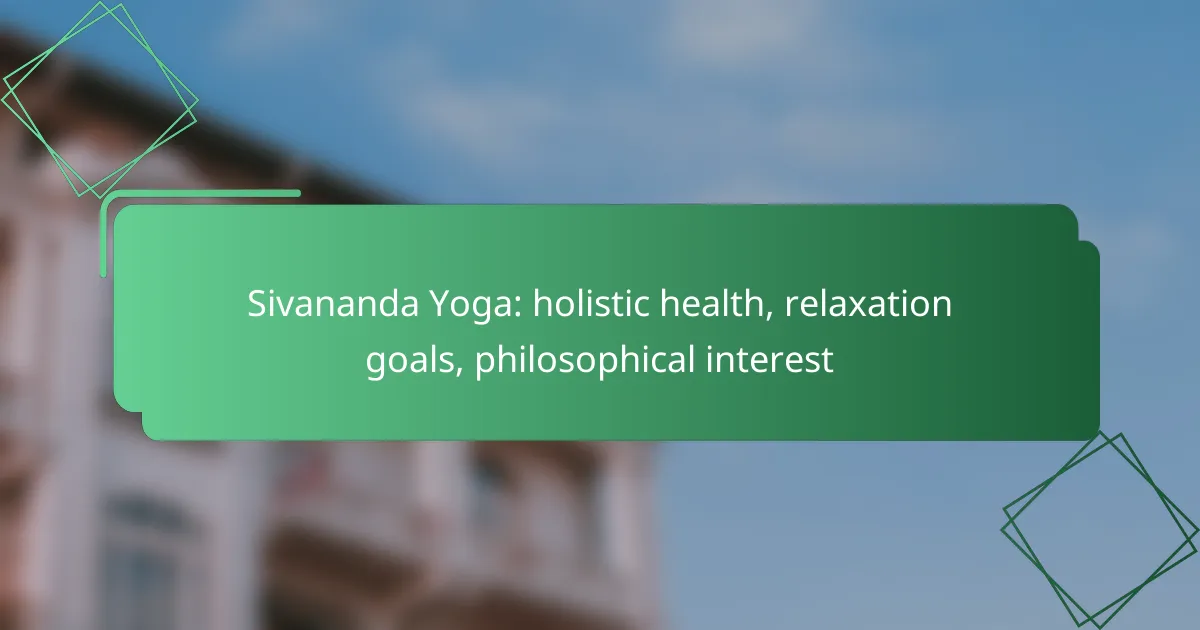Restorative Yoga, while beneficial for relaxation and recovery, carries risks associated with excessive passivity, dependency on props, and limited challenge. These factors can lead to physical stagnation, mental disengagement, and a diminished sense of personal agency, ultimately hindering overall growth and well-being. Practitioners must find a balance to ensure that their practice remains engaging and promotes both physical and mental progress.

What are the risks of passivity in Restorative Yoga?
Passivity in Restorative Yoga can lead to several risks, including physical stagnation, mental disengagement, and reduced strength. While the practice is designed for relaxation and recovery, excessive passivity may hinder overall progress and well-being.
Physical stagnation
Physical stagnation occurs when the body remains in a state of inactivity for extended periods. This lack of movement can lead to decreased circulation and muscle stiffness, making it harder to perform daily activities. Regularly incorporating gentle movement or transitions can help mitigate these effects.
To counteract stagnation, consider integrating short, active sessions between restorative poses. This approach encourages blood flow and keeps the body engaged without overwhelming it.
Mental disengagement
Mental disengagement can arise when practitioners become too passive during Restorative Yoga. This detachment may lead to a lack of focus, reducing the effectiveness of the practice. Staying mentally present is crucial for reaping the full benefits of relaxation and mindfulness.
To maintain mental engagement, try setting intentions for each session or practicing mindfulness techniques, such as deep breathing or body scanning, to keep your mind active and aware.
Reduced strength
Restorative Yoga primarily emphasizes relaxation, which can inadvertently lead to reduced strength over time. Without regular engagement of muscle groups, strength may decline, impacting overall fitness levels. Balancing restorative sessions with strength-building exercises is essential for maintaining muscle health.
Incorporate strength training exercises at least twice a week to complement your restorative practice. This combination will help ensure that you maintain a well-rounded fitness routine.
Potential for injury
While Restorative Yoga is generally low-impact, excessive passivity can still lead to injuries, particularly from improper alignment or prolonged positions. Staying aware of your body’s signals is important to prevent strain or discomfort.
To avoid injury, regularly assess your alignment and adjust props as needed. If you feel any discomfort, modify your position or take a break to ensure safety during practice.
Impact on flexibility
While Restorative Yoga can enhance flexibility, too much passivity may hinder progress. Without active stretching or engagement, muscles may lose their elasticity over time. It’s important to strike a balance between restorative poses and more dynamic stretching practices.
Consider adding active flexibility routines, such as yoga flows or dynamic stretches, to your weekly schedule. This will help maintain and improve flexibility while still enjoying the benefits of restorative practices.
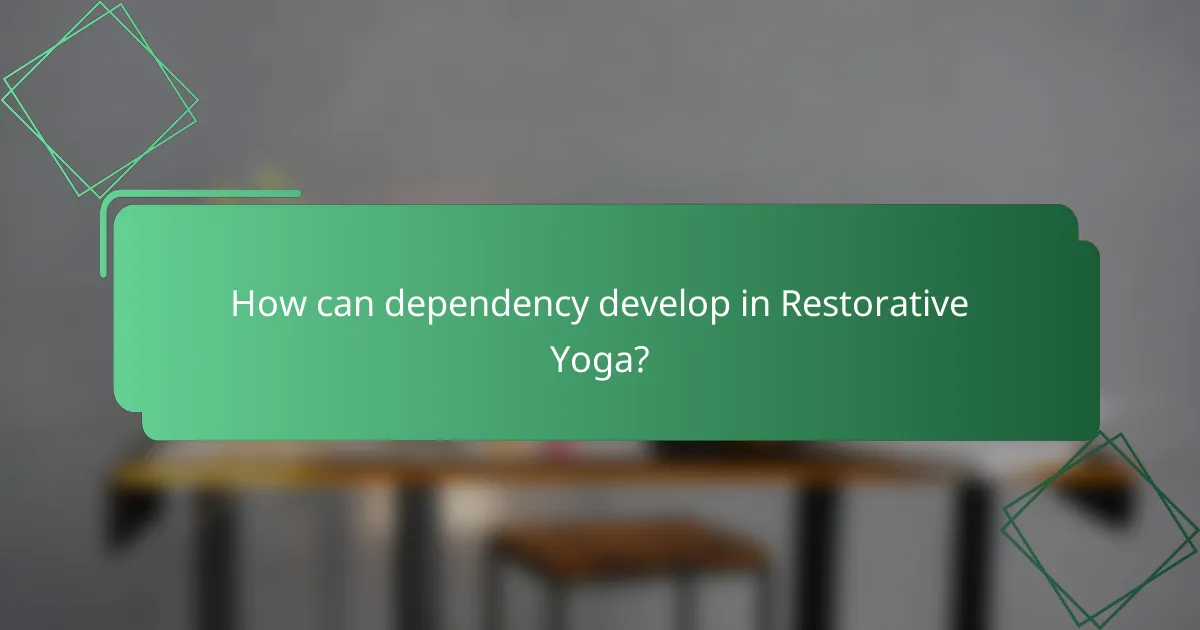
How can dependency develop in Restorative Yoga?
Dependency in Restorative Yoga can develop when practitioners become overly reliant on props and the comfort they provide, leading to a diminished sense of personal agency in their practice. This reliance can hinder the ability to challenge oneself and progress in yoga skills, ultimately affecting overall growth and well-being.
Over-reliance on props
Props such as bolsters, blankets, and blocks are essential in Restorative Yoga for support and comfort. However, excessive use can lead to dependency, where practitioners feel unable to perform poses without them. This can create a false sense of security, making it difficult to transition to more challenging postures or practices.
To mitigate this risk, practitioners should periodically practice without props, even if just for a few minutes. This helps build confidence and awareness of one’s body, encouraging a more balanced approach to using props.
Increased comfort with minimal effort
Restorative Yoga is designed to promote relaxation and recovery, but it can lead to an increased comfort level with minimal physical effort. When practitioners become accustomed to the ease of restorative poses, they may shy away from more vigorous practices that challenge their strength and flexibility.
To counteract this, it’s beneficial to incorporate a variety of yoga styles into your routine. Mixing restorative sessions with more dynamic practices can help maintain a well-rounded skill set and prevent stagnation.
Lack of progression in practice
Dependency in Restorative Yoga can result in a lack of progression, where practitioners do not advance in their skills or deepen their understanding of yoga. This stagnation can lead to frustration and a sense of unfulfillment in one’s practice.
To encourage progression, set specific goals for your yoga journey. This could include exploring new poses, increasing session durations, or integrating mindfulness techniques. Regularly reassessing your practice can help ensure continuous growth and engagement.
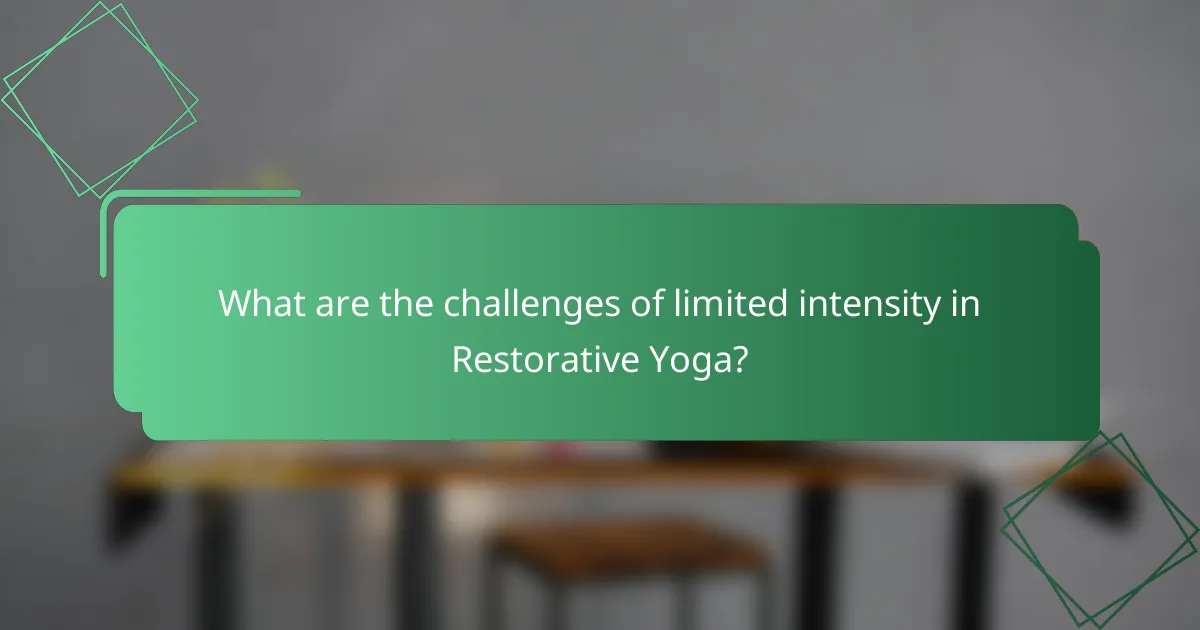
What are the challenges of limited intensity in Restorative Yoga?
Limited intensity in Restorative Yoga can lead to several challenges, including insufficient cardiovascular benefits, limited muscle engagement, and potential for boredom. While this practice promotes relaxation and stress relief, its passive nature may hinder physical fitness and engagement over time.
Insufficient cardiovascular benefits
Restorative Yoga typically involves gentle poses held for extended periods, which may not elevate the heart rate significantly. As a result, practitioners might miss out on the cardiovascular benefits associated with more vigorous forms of exercise. To counteract this, consider incorporating short bursts of more dynamic movement or integrating other forms of exercise into your routine.
For those seeking to improve cardiovascular health, aim for activities that raise your heart rate for at least 150 minutes per week, as recommended by health authorities. This can include brisk walking, cycling, or swimming alongside your restorative practices.
Limited muscle engagement
The passive approach of Restorative Yoga often leads to minimal muscle engagement, which can result in decreased strength and endurance over time. While the practice is beneficial for flexibility and relaxation, it may not provide the necessary stimulus for muscle growth or toning. To maintain muscle strength, consider complementing Restorative Yoga with strength training exercises.
Incorporating bodyweight exercises, such as squats or push-ups, two to three times a week can help balance the benefits of restorative practices and ensure overall muscle engagement.
Potential for boredom
Due to its repetitive and slow-paced nature, Restorative Yoga can sometimes lead to feelings of boredom among practitioners. This lack of challenge may discourage regular practice and reduce the overall benefits of yoga. To keep your practice engaging, try varying your poses, incorporating props, or practicing in different environments.
Setting specific goals or intentions for each session can also enhance focus and motivation. For example, aim to deepen your breath or explore new poses each time you practice to maintain interest and engagement.

How can practitioners mitigate passivity risks?
Practitioners can mitigate passivity risks in restorative yoga by incorporating more active elements into their practice, setting personal goals, and engaging in complementary activities. These strategies help maintain physical engagement and prevent over-reliance on passive postures.
Incorporate active poses
Integrating active poses into restorative yoga sessions can enhance engagement and counteract the risks of passivity. For instance, practitioners might alternate between restorative poses and gentle strength-building postures, such as lunges or modified warrior poses.
Consider using a mix of restorative and active sequences, ensuring that the body remains engaged throughout the practice. This balance helps to build strength and flexibility, reducing the likelihood of dependency on passive positions.
Set personal goals
Establishing personal goals can provide motivation and direction in restorative yoga. Goals might include improving flexibility, increasing strength, or mastering specific poses. By focusing on these objectives, practitioners can create a more dynamic and intentional practice.
Regularly reassessing and adjusting these goals keeps the practice fresh and challenging. Setting achievable milestones, such as holding a pose for longer durations or transitioning smoothly between poses, can enhance the overall experience.
Engage in complementary practices
Incorporating complementary practices, such as strength training, cardio, or other forms of yoga, can enrich the restorative experience. These activities help build a well-rounded fitness routine that supports the goals of restorative yoga while addressing its limitations.
For example, pairing restorative yoga with Pilates can enhance core strength and stability, making restorative sessions more effective. Practitioners should aim for a balanced weekly routine that includes various types of movement to maintain overall health and prevent dependency on restorative yoga alone.

What prerequisites should be considered for effective Restorative Yoga?
Effective Restorative Yoga requires an understanding of personal limitations, awareness of potential dependency, and the ability to embrace a limited challenge. Practitioners should assess their physical and mental readiness to engage in passive poses while ensuring they do not develop a reliance on the practice for relaxation or stress relief.
Understanding personal limitations
Recognizing personal limitations is crucial for practicing Restorative Yoga effectively. Each individual has unique physical capabilities, and understanding these can help prevent injury and enhance the benefits of the practice. Consider factors such as flexibility, strength, and any existing injuries or conditions.
A good approach is to start with basic poses and gradually incorporate more challenging variations as comfort and confidence grow. Listening to your body is essential; if a pose feels uncomfortable or painful, it may be a sign to modify or skip it.
Avoiding dependency
While Restorative Yoga can be a valuable tool for relaxation, it is important to avoid developing a dependency on the practice. Relying solely on yoga for stress relief may prevent individuals from exploring other coping mechanisms or lifestyle changes that could enhance overall well-being. Balance is key.
To mitigate dependency, incorporate a variety of relaxation techniques into your routine, such as mindfulness meditation, deep breathing exercises, or even outdoor activities. This diversity can enrich your practice and promote a more holistic approach to stress management.
Embracing limited challenge
Restorative Yoga is characterized by its gentle and passive nature, which may present a limited challenge compared to more vigorous styles. This can be beneficial for recovery and relaxation, but it’s essential to ensure that the practice remains engaging. Incorporating props like bolsters, blankets, and straps can enhance comfort while still providing a slight challenge.
To maintain engagement, consider setting intentions for each session or exploring different themes, such as mindfulness or self-compassion. This approach can help deepen your practice without overwhelming your body or mind.

